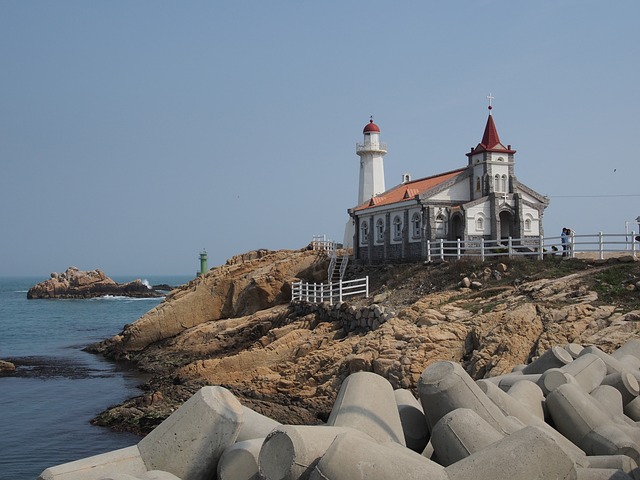Christians can be found all over the world, but the majority of them reside in the following countries:
1. United States
2. Brazil
3. Mexico
4. Russia
5. Philippines
6. Nigeria
7. Democratic Republic of Congo
8. China
9. India
10. Ethiopia
Table of Contents
Countries with the Largest Christian Populations
Have you ever wondered where most Christians in the world are located? Christianity is the largest religion in the world, with over 2.3 billion followers. While it is practiced in almost every country on the planet, there are some countries that have a particularly large Christian population.
One of the countries with the largest Christian population is the United States. With over 70% of the population identifying as Christian, the US is home to more Christians than any other country in the world. The country has a diverse range of Christian denominations, including Protestant, Catholic, and Orthodox, making it a melting pot of Christian beliefs and practices.
Brazil is another country with a significant Christian population. Over 80% of Brazilians identify as Christian, with Catholicism being the dominant denomination. The country has a rich history of Catholicism, with many churches and religious festivals that attract millions of worshippers each year.
Mexico is also home to a large Christian population, with over 90% of the population identifying as Christian. The country has a strong Catholic tradition, with many Mexicans attending church regularly and participating in religious ceremonies and festivals.
In the Philippines, Christianity is the dominant religion, with over 90% of the population identifying as Christian. The country has a strong Catholic presence, with many Filipinos attending mass regularly and participating in religious processions and festivals.
Nigeria is another country with a large Christian population, with over 50% of the population identifying as Christian. The country has a diverse range of Christian denominations, including Protestant, Catholic, and Orthodox, making it a vibrant and dynamic Christian community.
Russia is home to a significant Christian population, with over 70% of the population identifying as Christian. The country has a strong Orthodox tradition, with many Russians attending church regularly and participating in religious ceremonies and festivals.
In conclusion, there are many countries around the world with large Christian populations. From the United States to Brazil to Nigeria, Christianity is a global religion that is practiced by millions of people. Whether you are a Protestant, Catholic, or Orthodox Christian, you are sure to find a welcoming community of believers in these countries. So next time you wonder where most Christians are, just look to these countries with the largest Christian populations.
Fastest Growing Christian Communities
Have you ever wondered where most Christians are located around the world? With over 2 billion followers of Christianity, it’s no surprise that this religion has a global presence. While Christianity has been around for centuries, there are certain regions where the faith is growing at a rapid pace. Let’s take a closer look at some of the fastest-growing Christian communities around the world.
One of the regions experiencing significant growth in the Christian population is sub-Saharan Africa. Countries like Nigeria, Kenya, and Uganda have seen a surge in the number of Christians in recent years. In fact, Nigeria is home to the largest Christian population in Africa, with over 80 million followers of the faith. The growth of Christianity in sub-Saharan Africa can be attributed to a variety of factors, including missionary work, social and economic factors, and cultural influences.
Another region where Christianity is rapidly growing is Asia. Countries like China, South Korea, and the Philippines have seen a rise in the number of Christians in recent years. In China, despite government restrictions on religious practices, Christianity has been gaining popularity among the younger generation. South Korea, on the other hand, has a strong Christian presence, with over 30% of the population identifying as Christians. The Philippines, a predominantly Catholic country, has also seen growth in Protestant denominations in recent years.
Latin America is another region where Christianity is flourishing. Countries like Brazil, Mexico, and Colombia have large Christian populations, with Catholicism being the dominant denomination. However, Protestantism has been on the rise in Latin America, particularly in countries like Brazil and Guatemala. The growth of Christianity in Latin America can be attributed to a combination of historical factors, cultural influences, and missionary work.
In addition to these regions, the Middle East is also experiencing growth in the Christian population. Countries like Egypt, Lebanon, and Iraq have ancient Christian communities that have been present for centuries. Despite facing persecution and discrimination, these communities have managed to survive and even thrive in some cases. In recent years, there has been a resurgence of interest in Christianity among young people in the Middle East, leading to a growth in the Christian population.
Overall, the growth of Christianity in these regions can be attributed to a variety of factors, including missionary work, social and economic factors, and cultural influences. As the world becomes more interconnected, the spread of Christianity continues to expand to new regions and communities. It’s clear that Christianity is a global faith with a diverse and vibrant presence around the world.
In conclusion, while Christianity has a long history and tradition, it continues to evolve and grow in different parts of the world. From sub-Saharan Africa to Asia to Latin America to the Middle East, the Christian faith is thriving in diverse communities and cultures. As we look to the future, it will be interesting to see how Christianity continues to spread and adapt to new challenges and opportunities. Wherever you go, you’re likely to find Christians who are passionate about their faith and committed to spreading the message of love and hope.
Challenges Faced by Christians in Different Regions

Have you ever wondered where most Christians are located around the world? It’s a fascinating question that can shed light on the diversity and challenges faced by Christians in different regions. From bustling cities to remote villages, Christians can be found in every corner of the globe, each facing their own unique set of obstacles and opportunities.
One of the largest concentrations of Christians can be found in the Americas, particularly in the United States and Brazil. These countries have long histories of Christian influence, with a wide variety of denominations and traditions represented. However, being a Christian in these regions is not without its challenges. In the United States, for example, Christians may face criticism and discrimination for their beliefs, particularly in more secular areas. In Brazil, Christians may struggle with poverty and violence, which can make practicing their faith more difficult.
Moving across the Atlantic, Europe is another region with a significant Christian population. Countries like Italy, Poland, and Germany have strong Christian traditions, with Catholicism and Protestantism being the dominant denominations. However, Europe is also becoming increasingly secular, with many people turning away from organized religion. This can make it challenging for Christians to practice their faith openly and to find community support.
In Africa, Christianity is growing rapidly, with countries like Nigeria, Ethiopia, and Kenya seeing a surge in Christian believers. However, Christians in Africa face a different set of challenges than their counterparts in other regions. Poverty, political instability, and persecution from extremist groups can make it dangerous to openly practice Christianity in some parts of the continent. Despite these obstacles, many African Christians remain steadfast in their faith, finding strength and hope in their beliefs.
Asia is another region with a diverse Christian population, with countries like South Korea, the Philippines, and India having large numbers of believers. However, Christians in Asia often face persecution and discrimination, particularly in countries where Christianity is a minority religion. In places like North Korea and China, Christians may be arrested, imprisoned, or even killed for their faith. Despite these risks, many Asian Christians continue to practice their faith in secret, finding strength in their underground churches and prayer groups.
In the Middle East, Christians are a minority in predominantly Muslim countries like Egypt, Iraq, and Syria. Christians in this region face persecution and violence from extremist groups, who see them as infidels or enemies of Islam. Many Middle Eastern Christians have been forced to flee their homes and seek refuge in other countries, leaving behind their communities and traditions. Despite these challenges, many Middle Eastern Christians remain steadfast in their faith, finding comfort and strength in their shared beliefs.
No matter where they are located, Christians around the world face a variety of challenges and obstacles in practicing their faith. From discrimination and persecution to poverty and violence, Christians must navigate a complex landscape in order to live out their beliefs. Despite these challenges, many Christians remain steadfast in their faith, finding strength and hope in their shared beliefs and community support. Wherever they may be, Christians continue to spread the message of love, peace, and compassion, making a positive impact on the world around them.
Historical Spread of Christianity
Have you ever wondered where most Christians are located around the world? Christianity, one of the world’s largest religions, has a rich history of spreading across continents and influencing cultures. From its humble beginnings in the Middle East to its widespread presence in countries around the globe, the historical spread of Christianity is a fascinating journey to explore.
The roots of Christianity can be traced back to the life and teachings of Jesus Christ in the first century AD. Initially, Christianity was a small movement within the Roman Empire, but it quickly gained followers and spread throughout the region. The early Christians faced persecution and challenges, but their faith continued to grow and flourish.
As Christianity spread beyond the borders of the Roman Empire, missionaries and evangelists carried the message of Jesus to distant lands. The conversion of Emperor Constantine to Christianity in the fourth century marked a turning point for the religion, as it gained official recognition and support from the state. This paved the way for Christianity to spread further across Europe and beyond.
During the Middle Ages, Christianity continued to expand its reach, with missionaries traveling to Asia, Africa, and the Americas to spread the gospel. The establishment of monasteries and churches in remote regions helped to solidify Christianity’s presence in these areas. The influence of Christianity on art, architecture, and literature during this time is evident in the rich cultural heritage of many countries.
The Age of Exploration in the 15th and 16th centuries brought Christianity to new lands as European explorers and colonizers spread their faith along with their empires. The missionary efforts of organizations like the Jesuits and Franciscans played a crucial role in bringing Christianity to indigenous peoples in the Americas, Africa, and Asia. The blending of Christian beliefs with local customs and traditions gave rise to unique forms of Christianity in these regions.
Today, Christianity is the largest religion in the world, with over 2 billion followers spread across every continent. The majority of Christians are located in the Americas, Europe, and Africa, with significant populations in Asia and Oceania as well. The diversity of Christian denominations and traditions reflects the global nature of the faith, with Roman Catholicism, Protestantism, and Eastern Orthodoxy being the largest branches of Christianity.
In the Americas, Christianity has a strong presence, with the United States, Brazil, and Mexico having some of the largest Christian populations in the world. The history of colonization and missionary activity in these regions has left a lasting impact on the religious landscape, with Christianity playing a central role in the culture and society of many countries.
In Europe, Christianity has deep historical roots, with countries like Italy, Spain, and France being traditionally Christian nations. The influence of Christianity on European art, music, and literature is evident in the rich cultural heritage of the continent. Despite the rise of secularism in some European countries, Christianity continues to be a significant force in shaping the values and beliefs of many people.
In Africa, Christianity has seen rapid growth in recent decades, with countries like Nigeria, Ethiopia, and South Africa having large Christian populations. The spread of Christianity in Africa can be attributed to missionary efforts, as well as the appeal of the Christian message of hope and salvation. The blending of Christian beliefs with traditional African spirituality has given rise to vibrant forms of Christianity in the region.
In Asia, Christianity has a smaller presence compared to other continents, but countries like the Philippines, South Korea, and China have significant Christian populations. The history of Christianity in Asia is complex, with missionary activity, colonialism, and cultural exchange all playing a role in shaping the religious landscape. The growth of Christianity in Asia is a testament to the adaptability and resilience of the faith in diverse cultural contexts.
In Oceania, Christianity has a strong presence, with countries like Australia, New Zealand, and Papua New Guinea having large Christian populations. The history of Christianity in Oceania is intertwined with the history of colonization and missionary activity, as European settlers brought their faith to the indigenous peoples of the region. Today, Christianity continues to be a central part of the cultural identity of many Pacific Island nations.
Overall, the historical spread of Christianity is a testament to the enduring power of faith to transcend boundaries and unite people from diverse backgrounds. From its origins in the Middle East to its global presence today, Christianity has left an indelible mark on the world. As Christians around the world continue to practice their faith and share the message of Jesus, the legacy of Christianity will continue to shape the course of history for generations to come.
Impact of Christianity on Global Culture
Have you ever wondered where most Christians are located around the world? Christianity is one of the largest religions in the world, with over 2 billion followers. It has had a significant impact on global culture, shaping the way people think, behave, and interact with one another. So, where are most Christians located?
The answer may surprise you. While Christianity originated in the Middle East, it has spread to every corner of the globe. Today, the majority of Christians can be found in the Americas, Europe, and Africa. In fact, the Americas have the largest Christian population, with over 800 million followers. This is largely due to the colonization of the Americas by European powers, who brought Christianity with them as they settled in the New World.
Europe is also home to a large number of Christians, with over 560 million followers. Many European countries have a long history of Christianity, with churches and cathedrals dating back hundreds of years. The influence of Christianity can be seen in European art, architecture, and literature, making it an integral part of European culture.
Africa is another continent with a significant Christian population, with over 630 million followers. Christianity has been growing rapidly in Africa in recent years, with many people turning to the faith for comfort and guidance. The influence of Christianity can be seen in African music, dance, and traditions, blending with local customs to create a unique and vibrant culture.
While the Americas, Europe, and Africa have the largest Christian populations, Christianity can be found in every corner of the globe. Asia, for example, is home to over 300 million Christians, with countries like the Philippines, South Korea, and China having large Christian populations. Christianity has also spread to Oceania, with countries like Australia and New Zealand having significant Christian communities.
The impact of Christianity on global culture cannot be overstated. It has shaped the way people think about morality, ethics, and spirituality, influencing everything from politics to art to education. The teachings of Jesus Christ have inspired countless individuals to live lives of compassion, forgiveness, and love, creating a more peaceful and harmonious world.
As Christianity continues to spread and evolve, its influence on global culture will only grow stronger. The message of love and redemption that lies at the heart of Christianity has the power to unite people of all races, religions, and backgrounds, creating a more inclusive and compassionate world for future generations.
So, the next time you wonder where most Christians are located, remember that they can be found in every corner of the globe, shaping the world in ways both big and small. Christianity’s impact on global culture is undeniable, and its influence will continue to be felt for generations to come.
Conclusion
Most Christians are located in the Americas, Europe, and Africa.
For licensing reasons, we must provide the following notice: This content was created in part with the help of an AI.


